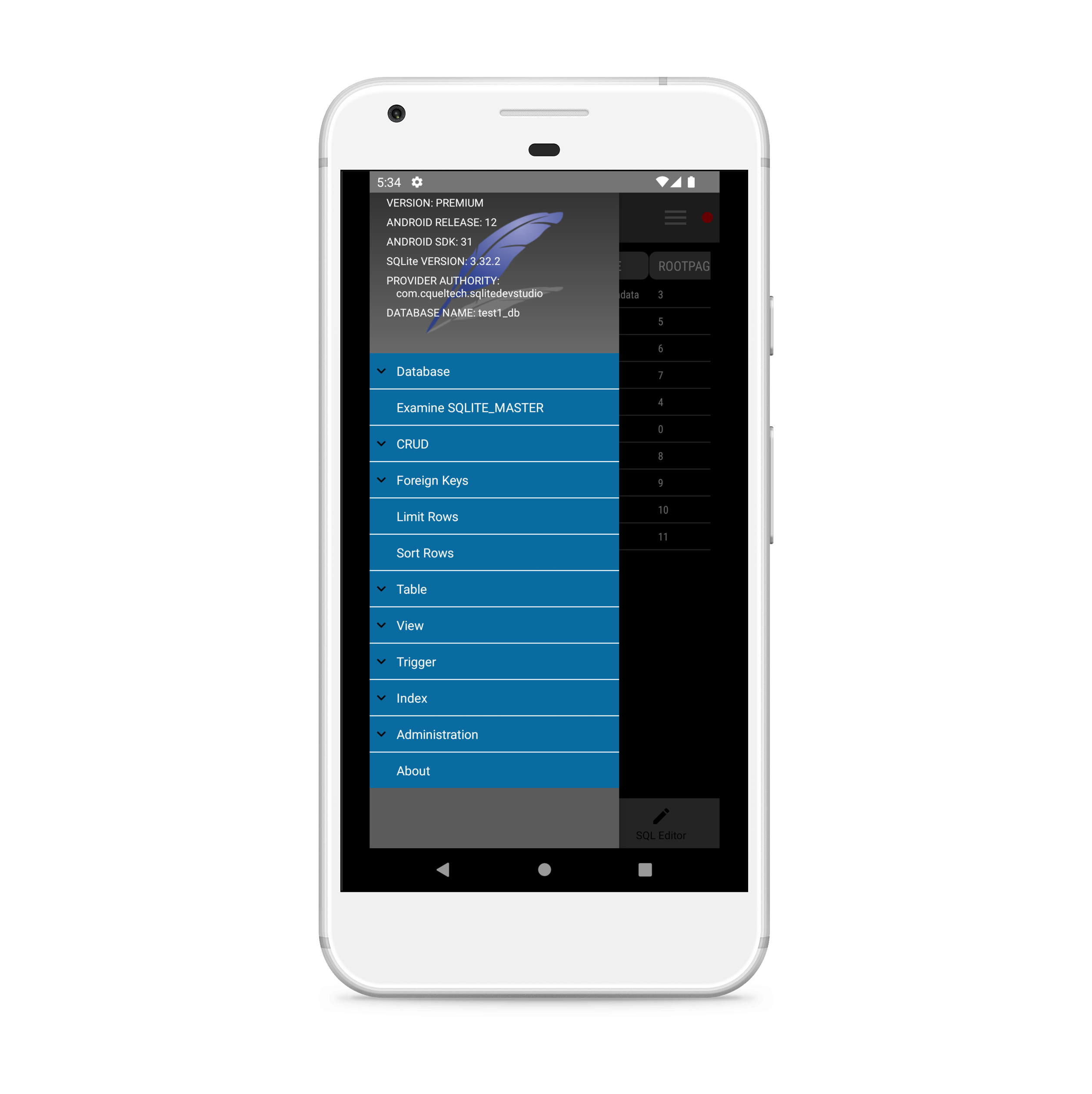Overview
SQLiteDevStudio is a front end SQLite Database development and maintenance tool for Android. It has been primarily developed for developers to create databases specific to their own application needs which can then be exported into their own projects.
It can also be used to simply view and edit data. This is particuarly useful when wishing to see the current state of data during the testing phase of application development.
SQLiteDevStudio can access databases from a number of locations on a given device:
- SQLiteDevStudio Internal Storage: Databases can be created and modified within SQLiteDevStudio's internal storage. Once complete can be exported to another project in the form of a database adapter .java file.
- External Shared Storage: A database that is located in a device's shared storage can be imported into SQLiteDevStudio's internal storage where it can be viewed and edited. To push any changes made to the external version a database restore will need to be done.
- Access via Content Provider: Another option when you are developing your own app is to include a content provider to allow SQLiteDevStudio to access the database(s) within your app's internal storage. The required content provider can be found here (GitHub repository) along with instructions on how to apply it. Since a content provider could allow apps other than SQLiteDevStudio to access your database a level of security has been added to the provider. Only database requests submitted to the content provider with the correct provider access code will be granted. On completion of your project and prior to release the content provider should be removed or the associated 'exported' variable in the manifest file set to false.
- Third-Party App Internal Storage: To access databases of third-party apps the device needs to be rooted. If this is the case then the databases can be accessed, viewed, and modified directly. SQLiteDevStudio has a built in file explorer for navigating to the required database.
SQLiteDevStudio can also be installed on an Emulator (with Google Play) in your own development environment. This is useful during development and testing of your own applications.
After install a user account needs to be set up to access the application. User will be prompted for an email address. This is used only in the event that the user has forgotten their password. Password will be sent to the email address that was used during account setup. Email address is encrypted and only stored locally on the device. It is not shared amongst any other parties.
Functionality
SQLiteDevStudio has the following functionality:
- Create/Delete database.
- Open existing databases.
- Save/Restore database to external storage.
- Export database (exported as a database adapter .java file for applying to your own projects, note: data not exported).
- Write and execute your own SQL statements with the built in editor.
- SQL keywords/data types/functions/etc are highlighted within the editor.
- Previously executed statements for the current session can be re-called through the SQL History dialog.
- Database transaction functionlity (begin transaction; commit; rollback).
- View, update, delete, and insert data via a dialog interface.
- View exiting foreign keys.
- Enable/disable foreign key constraints.
- Limit number of rows returned.
- Sort the rows returned.
- Describe table/view.
- Create, alter, and drop tables.
- Create and drop triggers.
- Create and drop indexes.
- BLOB data type viewer. Display BLOBs for a selected table record.
- Extract the SQL for database objects and display code in the editor.
- Import table data in the form of a CSV file.
- Export table data to a CSV file.
Some functionality may not be available on older devices (see Terms of Service). All functions should be available on Android 10(Q) and onwards.
Import/Export of .csv Files
To import a .csv file into a SQLite database table using SQLiteDevStudio the format of the .csv must be as follows:
column1_name,column2_name,column3_name,...,columnN-1_name,columnN_name
column1_value,column2_value,column3_value,...,columnN-1_value,ColumnN_value
column1_value,,column3_value,...,columnN-1_value,columnN_value
...
Where 'N' is the number of columns in the table.
Export of data into a .csv file will be of the same format as that shown above.







